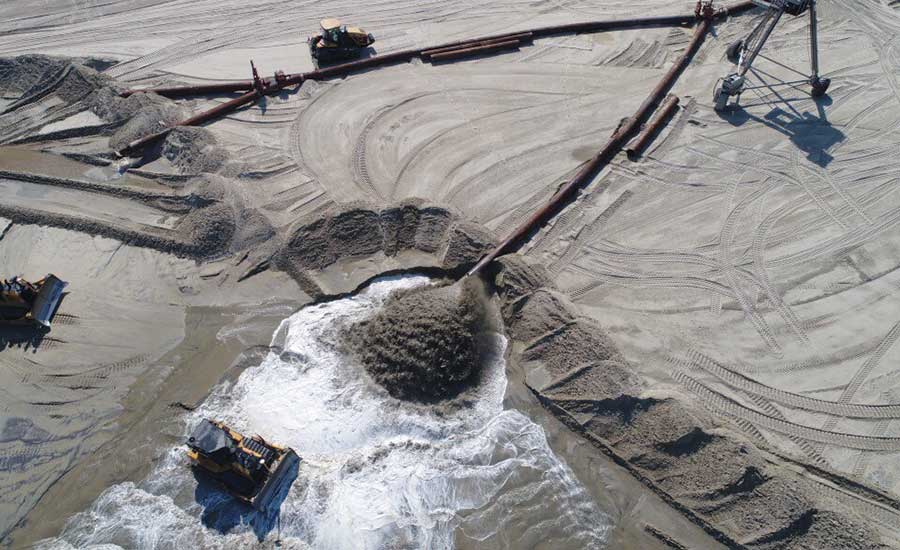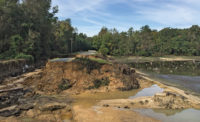 For nearly a century, oceanside communities, particularly those along the Atlantic, have used beach nourishment to safeguard buildings and infrastructure from the erosive forces of waves and tidal action. These projects have saved both lives and livelihoods, restoring a natural barrier against coastal storms while preserving tourism-dependent local economies.
For nearly a century, oceanside communities, particularly those along the Atlantic, have used beach nourishment to safeguard buildings and infrastructure from the erosive forces of waves and tidal action. These projects have saved both lives and livelihoods, restoring a natural barrier against coastal storms while preserving tourism-dependent local economies.
Will beach nourishment remain a viable option in the face of rising sea levels? The American Shore and Beach Preservation Association says yes, asserting in a position paper that, in many areas, beach nourishment “is the most cost-effective and environmentally acceptable approach to providing a buffer against the sea” and that, in most cases, “the increase in cost to account for sea-level rise during the life of a beach project will be insignificant in relation to the overall benefits provided by the beach.”
Others counter that beach nourishment’s economics don’t square with some longer-term trends. Projects can range from $3.3 million to $17 million, according to a 1999 study, and last five to 10 years before a new infusion of sand is needed.
Factoring in sea-level rise could make those investments more frequent. Andy Coburn, associate director of Western Carolina University’s Program for the Study of Developed Shorelines, estimates the frequency of nourishment projects has increased since the 1970s; measured by sediment quantity, their size appears to have increased since Superstorm Sandy.
Dare County, N.C., believes it has found a sustainable economic strategy to safeguard its $1-billion-per-year tourist economy from erosion and, at least for the short term, the exacerbating effects of storms and sea-level rise.
This summer, revenue from special community-level tax districts, combined with a countywide occupancy tax on vacation rental homes, is funding four separate beach-nourishment projects, totaling approximately $65 million.
“With this funding model in place, we can do these projects as needed for the foreseeable future,” explains County Manager Bobby Outten. The resulting 200- to 300-ft-wide beaches are designed to last up to seven years, he estimates.
Although the increased storm activity could cut into that nourishment life span, Outten notes that, because engineered beaches are considered public infrastructure, major storm damage would be eligible for federal disaster assistance. The funds would reimburse the county’s costs to restore the beach to pre-storm conditions, putting it back on the normal replacement schedule.
Outten admits that the strategy’s financial viability hinges on many factors, including each nourishment project’s life span, dredging costs, source-sand availability and the continued health of the state’s tourist economy.
“The model works for as much as you can plan for in advance,” he says. “If estimates stay in line, we can handle it.”





Post a comment to this article
Report Abusive Comment